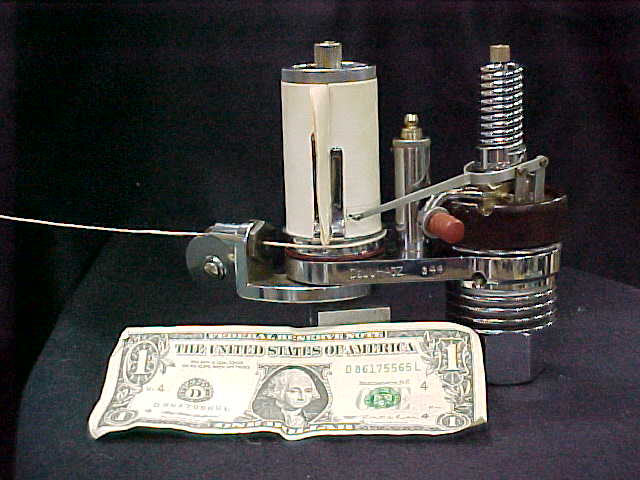The Engine Indicator is used to record the cylinder pressure of an engine and piston travel in an X - Y graph, where pressure forms the vertical axis and piston travel forms the horixontal axis. Zero pressure is in the lower left of the graph and coincides with the piston being at the top of the stroke. The Indicator uses a pen(cil) to draw the graph on a piece of paper, usually about 5 x 3 inches.

The picture above is a DeJUHASZ Indicator manufactured in State College PA about 1942. This one never left State College, but most went to the US Navy for use on steam and Diesel ship engines. I obtained this one when PSU threw it out !!! (Really it cost me $10 at the salvage auction, in a fitted box with all accessories)
The graph is drawn on the paper wrapped around the vertical cylinder in the center, the string exiting to the left would be fastened to the engine crosshead via a reducing mechanism so as to rotate the cylinder and paper as the engine strokes. At the left-most end of the sloping bar is a piece of drawing lead, the red knob below the bar is a pen lifter, and the yoke at the right end of the bar is fitted to a small piston fitted to a cylinder. Just to the right of the -1- of the Dollar is a hex nut that connects the indicator cylinder to the engine cylinder headspace. This connection allows engine cylinder pressure to move the indicator piston vertically, causing the lead to move up and down as engine cylinder pressure rises and falls.